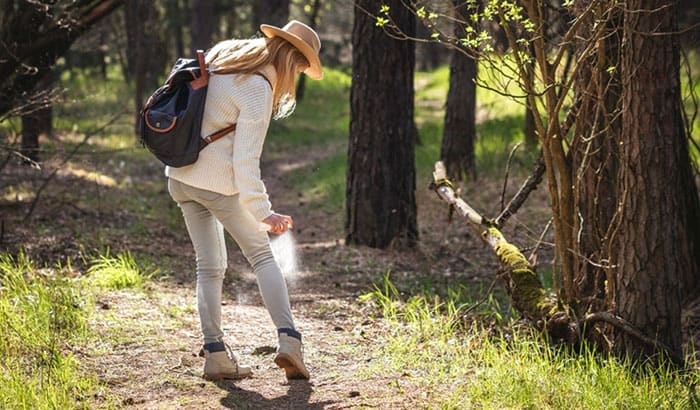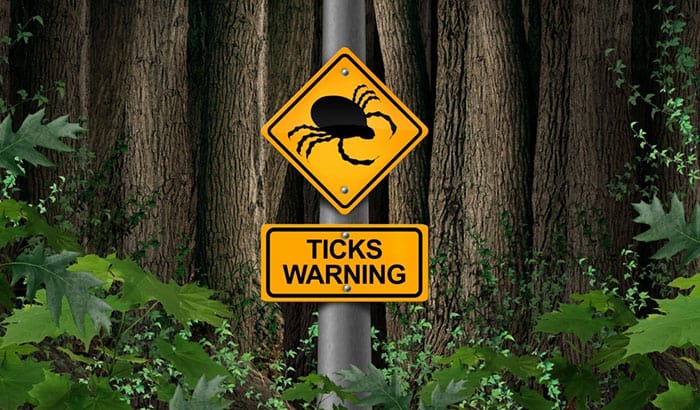Hiking can be fun, especially during the summer, but unfortunately, it is also at the same time that ticks thrive, which can be a treat in doing an enjoyable hike. But do you know how to avoid ticks while hiking? If not, please check the list below as we show different ways to prevent this bug.
Contents
Tip No. 1: Treat Your Clothing, Gears, and Footwear First
Before actually going outside, treating your hiking clothes, gears, and footwear can be an excellent way to avoid ticks while hiking. In particular, an insecticide called permethrin can kill insects such as ticks and treat all your clothes and other essentials.
When it comes to the mixture of this insecticide, using a 20:1 ratio is enough to make it practical to prevent the tick from coming to you. You can submerge all your essentials into the mixture and let it flat dry.
Tip No. 2: Choose the Right Clothing
During the hike, having the proper clothing is also essential to avoid this bug. Wearing closed footwear and socks will prevent the bag from sneaking into you. Avoid wearing sandals because you are leaving both of your feet exposed.
Tucking your pants to your suck is also an excellent way to prevent this bug from getting inside of you. If you can wear light-colored clothing, the better because you will be able to see the bugs clearly and easily.
Gaiters are also an excellent way to protect your ankles and legs. That is if you insist on wearing shorts or tank tops during the hike. This accessory can also help keep small rocks and other forms of dirt away from your hiking shoes.
Tip No. 3: Maximize the Use of Tick Repellant
Apart from treating your clothes with an insecticide that repels ticks, you can also apply a tick repellant directly to your skin. Doing this way can help in preventing the tick from invading you. The best thing about this repellent is that it is not only effective on ticks but also effective to flies and mosquitoes.
Tick repellents such as DEET or Piacridin are highly recommended to be used if you want to avoid ticks outdoors. Oil of lemon eucalyptus (OLE) has also been proven to repel ticks while hiking effectively.
Tip No. 4: Choosing the Place to Hike Wisely
Choosing the place to hike can also determine the impact of the tick infestation. Unfortunately, there are places on the hiking place that are more tick-infested compared to the others. The most important thing is to know where these places are. These bugs thrive in areas where there are tall grasses and thick bushes, especially in warm weather.
The best way is to avoid these places as soon as possible. The moment you walk through these tall grasses and bushes, you are giving yourself a chance for a tick bite and infestation. So, if you want to avoid these unwanted bags, make sure to stick in the middle of the path as much as you can.
Also, ticks also have a tendency to attach to your gears, such as the backpacks and your other gears. You need to check if you have the time or when you are resting. Spending on leaf piles will also give those bugs a chance to sneak into you. So, always beware.
Tip No. 5: Choosing the Right Time to Hike
Ticks are very active during the spring and summer months, which means if you hike during these times, expect a lot of ticks to invade you during the hike. They can also be slightly active during the winter days but not too much. But technically speaking, these bugs are very much alive throughout the year, which is not good news on your end.
Spring and summer times are high-risk for ticks. During these times, these bugs are in their earlier stage of development. This stage is called nymphs, where the bugs are more dangerous. During this stage, the tick carries more disease-causing pathogens, which are very dangerous. They are also tiny in size, making them difficult to locate or spot.
With all of this information, it will be better for you to hike in between summer and fall. These are the best times for you to hike without too much worrying about these bugs having to ruin your experience. Also, if you can hike on the most freezing winter days, the better because ticks are inactive during these colder seasons.
Tip No. 6: Daily Inspection
If you are spending multiple days outdoors, do yourself a favor of checking yourself and your gears for tick infestation. This step is essential if you are hiking in tick-infested areas and those places full of tall grass and brush-covered landscapes. In general, you will not really feel the bite of a tick but will feel it once the part being bitten starts to itch.
Ticks are opportunists because they are just waiting for an opportunity for them to find a host that will give them the possibility to sneak in anywhere in the human’s body. But if you inspect yourself daily, including all your gears and clothing, you can actually avoid being bitten by these bugs.
Also, always bring with you tick removal tools such as a tweezer and tick remover. This action will make the inspection and removal very easy and fun. These tools are tiny, so it should not be a problem finding a place for them before you start hiking.
Conclusion
Tick is always a threat when it comes to your hike, which means learning how to avoid ticks while hiking is essential. Bitten by ticks can also lead to contracting unwanted diseases, which can affect your health in the long run.
So, before going outdoors to hike, you need to know the different ways to avoid ticks at all costs. We have presented several ways that can be used to make you safe on your hike and avoid being bitten by these annoying bugs.


